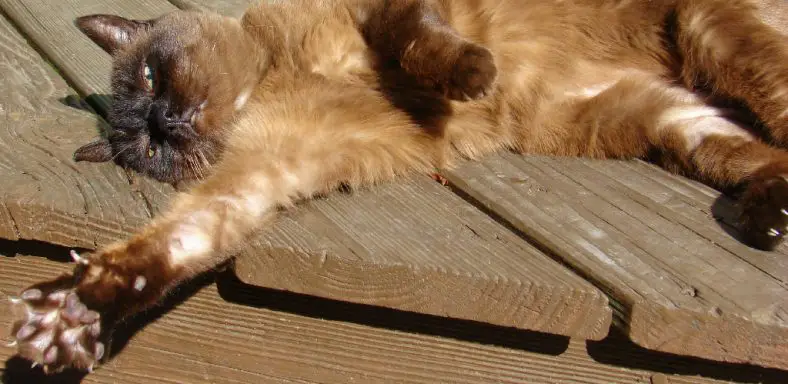Cats are known for being playful and curious creatures. Unfortunately, they also have a habit of kneading with their claws, which can be annoying and dangerous. In this blog post, we will provide some tips on how to stop a cat from kneading with claws. Keep reading to learn more!
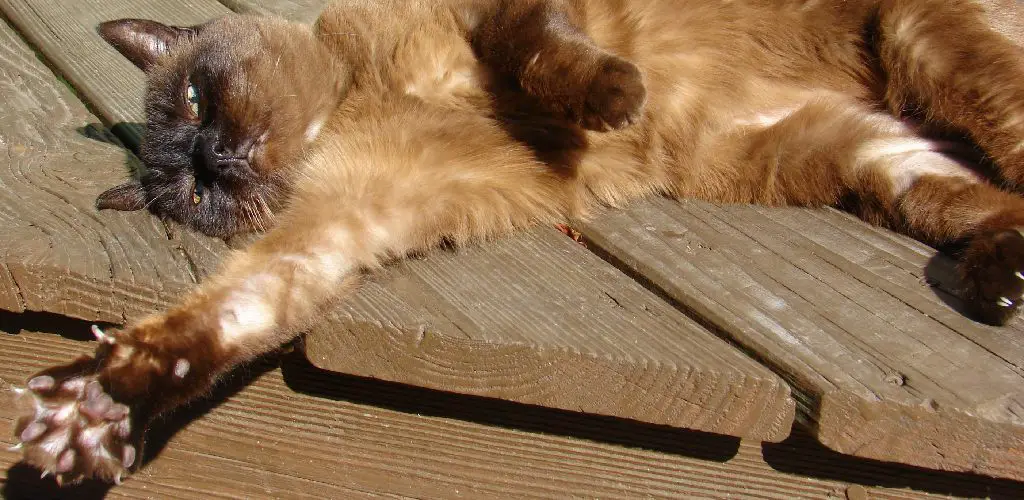
There are a few possible reasons why cats might knead with their claws. One theory is that cats knead to help build up the muscles in their paws. Another theory is that cats knead to mark their territory.
However, the most likely explanation is that cats knead because it feels good. The repetitive motion of kneading stimulates the cat’s neural pathways and causes a release of endorphins, which is why it feels so good for them.
Contents
How to Stop a Cat from Kneading with Claws Step bt Step Guide
Step 1: Be Aware of What Kneading Is
The first step to stopping the cat from making beds is to understand why they’re doing it. Kneading with claws (aka making a bed) is instinctual and comforting for cats; many describe this type of motion as similar to when humans knead bread dough. Therefore, it’s important to be aware of the things that trigger your cat’s kneading so you can identify what’s causing them to make a bed.
Step 2: Location
Many cats will knead in the same spots each and every time. This can be annoying for humans who may not enjoy walking on cat beds in the middle of the night, but it’s also not an ideal setup for keeping your home free from damage. Knowing where your cat is most likely to knead will allow you to take preventative steps that can help avoid injury.
Step 3: Keep the Area Free of Loose Objects
Cats use their claws on both soft surfaces like clothes and couches as well as harder materials like countertops, tables, and even walls. Prevention is always better than a cure when it comes to keeping your home free from damage; by keeping the area where your cat is most likely to knead clear of loose objects, you’ll be preventing them from scratching and potentially ruining these items.
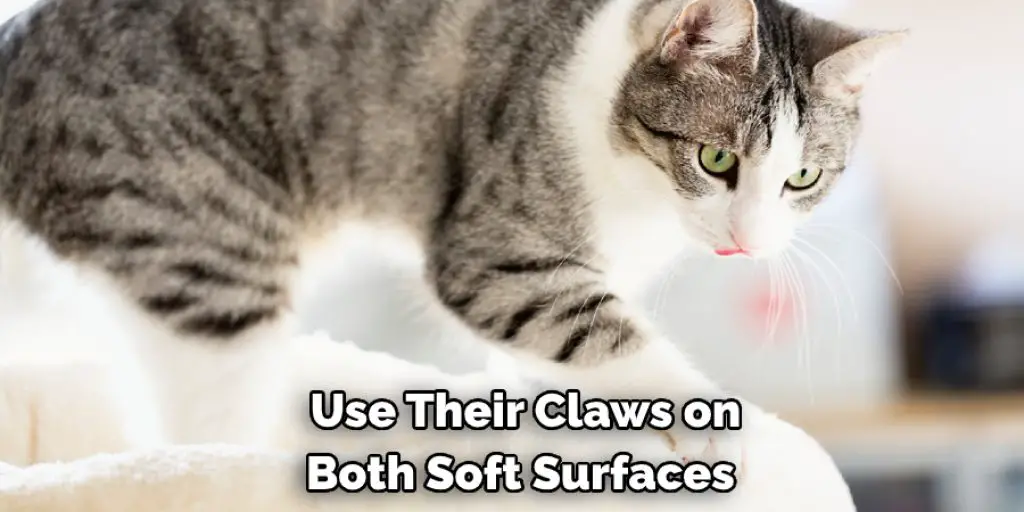
Step 4: Soften Their Area with A Blanket or Towel
Cats love soft, snuggly places, and blankets can work as a great way to satisfy their need to make a bed. If your cat is already accustomed to sleeping on your bed, one quick solution is to place a blanket or towel over the area where they sleep that way; it’s already made and snuggly when they wake up.
Step 5: Offer Them an Alternative
Now you know what makes your cat want to knead and where they tend to do it, so the next step is to offer them something else. How you choose to go about this can vary greatly depending on your specific needs and circumstance; using a scratching post, providing plenty of toys, and offering treats are just three possible solutions to this problem.
Step 6: Trim Their Nails
Cats are also known to knead with their claws because it helps them exercise and keeps their nails short. If you notice that your cat is making beds frequently, trimming their nails may help prevent damage to themselves and the items around the house.
The best way to prevent your cat from kneading with claws is to trim their nails regularly. This will help keep their nails short and less likely to cause damage.
Step 7: Be Patient
The most important part of learning how to stop a cat from kneading is to be patient. Cats are creatures of habit and can sometimes take longer than you’d like to accept change.
For example, their first instinct will always be to make beds; it’s up to you as the owner to help them develop other habits by providing other alternatives.
Depending on the age and personality of your cat, this might take some time; however, with patience and diligence, you will be able to prevent damage to surrounding objects.
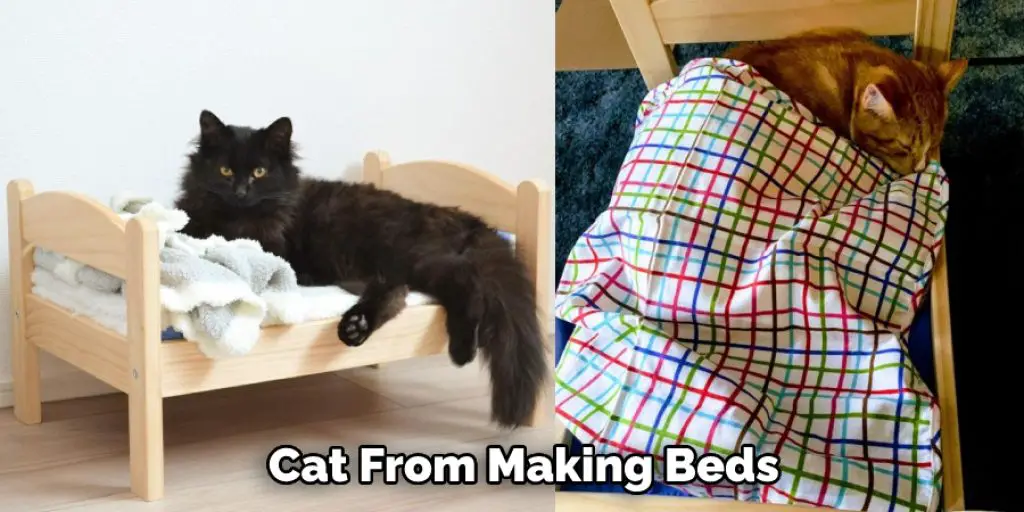
Step 8: Be Thankful that Cats Knead with Claws
It can be frustrating when your cat wants to make beds, but it’s important to remember that all pets are individuals with their personalities and habits. Kneading with claws is an instinctual behavior for your cat so try to focus on the times when they’re making beds because it makes them happy and not because they’re doing damage.
Step 9: Take Your Cat for A Checkup:
Cats can be sick even though it may seem like they are okay. Pets visit the doctor for checkups to ensure everything is okay with their health. If your cat hasn’t been to the vet yet, you should consider taking them.
Some things to consider when your cat is kneading with claws are:
- The location of the kneading
- The items around the house that are being damaged
- What can be done to provide an alternative for the cat
- How often to trim the cat’s nails
Keep reading for more information about how to stop a cat from kneading with claws.
Common Reasons Cats Knead Their Owners
1. Kneading Is a Kitten Behavior:
It’s pretty common among kittens to knead their mother cat or human owners before they can nurse.
2. You Taught It!
If you’ve ever given your cat a treat for kneading you, you may have inadvertently taught them that this is how they get rewarded.
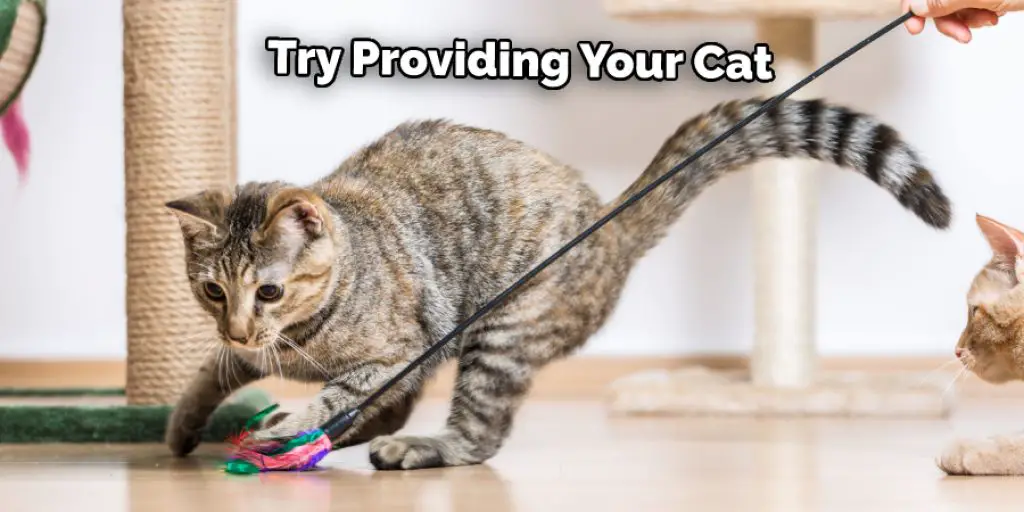
3. Bedding Down:
Cats are naturally territorial. As they relax, the instinct to knead goes away. Some cats will knead for security or comfort when they see you as “higher ranking” than them in the household.
4. I Love You. You Should Smell Like Me!:
When your cat places your hands close to its face and starts kneading, it’s not trying to hurt you. Instead, it’s attempting to mark you with their scent from the glands in their paws.
5. Cat-calisthenics:
One way to stop a cat from kneading with claws is to provide them with an outlet for their energy. Try providing your cat with some basic exercises or playtime. This can help tire them out and reduce the need to knead.
How Do You Get Your Cat to Stop Clawing You?
1. Show dominance:
If your cat is kneading you with its claws, it may be trying to show dominance over you. You can assert your dominance by firmly telling your cat “NO” and pushing it away. If your cat continues to knead you, spray it with a water bottle or use a citronella spray collar.
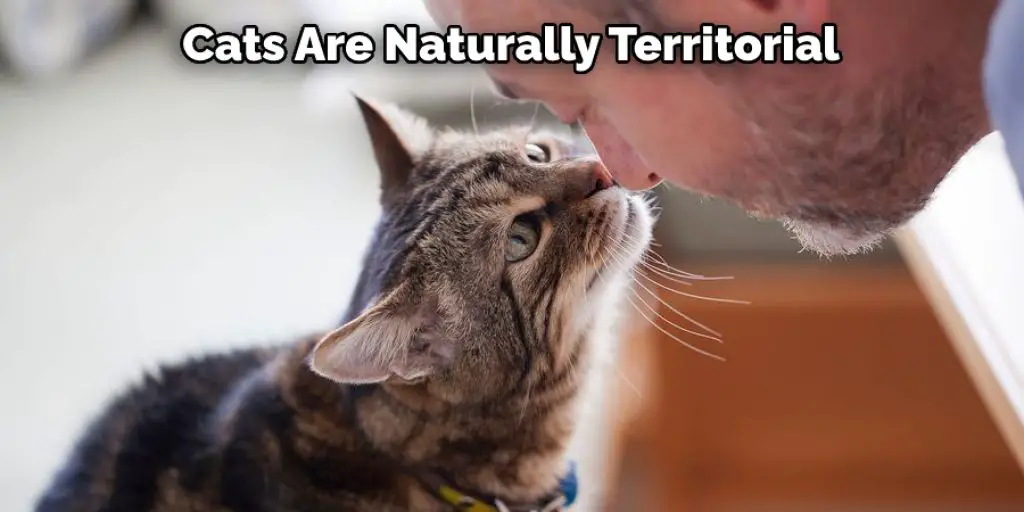
2. Using Timeouts:
If asserting dominance doesn’t work, you can try using timeouts. For example, when your cat starts kneading you with its claws, say “NO” and put it in a timeout. Timeouts should last for about 1 minute for each year of your cat’s age.
3. Hand Clapping:
Another way to get your cat to stop kneading you with its claws is to clap your hands. Cats usually don’t like loud noises, so the hand-clapping will startle them and make them stop.
Training a Cat to Stop Kneading
It’s important to remember that cats are creatures of habit. If your cat has been kneading you for a long time, it may be difficult to get them to stop. The key is to be consistent and patient.
1. Ignore the Behavior:
The most important thing you can do when training a cat to stop kneading is to ignore the behavior. If you give them any attention – positive or negative – they will only continue doing it.
2. Provide an Alternative Activity:
If your cat is kneading you for a reason (such as security or comfort), try providing them with an alternative activity. This could be something as simple as playing with them or giving them a new toy to play with.
3. Redirect the Behavior:
If your cat is kneading you to mark their scent on you, try putting a towel by their favorite place to lay. Every time they want to knead, they’ll use the towel instead of your lap or arm. This will allow them to still have the same feeling as kneading, but it will keep you from getting scratched.
4. How to Stop a Cat from Kneading with Claws:
If none of these work and your cat is still kneading you despite any attempts to stop them, it may be time for some love-hate relationship therapy. When they start kneading you, gently push them off you or roll over on your side. You should also keep in mind that when training a cat to stop kneading, consistency is key!
Frequently Asked Question
Do Kittens Like Catnip, Too?
Yes, kittens enjoy catnip just as much as adult cats do.
What Are the Benefits of Using Catnip to Stop a Cat from Kneading with Claws?
Standard benefits:
- Keep your furniture from getting scratched
- Save money on a scratching post
- Emotional benefits:
- Have a happier cat that is less destructive.
How Much Catnip Should I Give My Cat?
It is recommended that you give your cat a small pinch of catnip. You can also sprinkle it on top of their food.
Why Do Cats Knead and How Do They Feel About It when They’re Not Getting What They Want?
When a cat kneads, it usually means that the cat is content and happy. If a cat is kneading and not getting what it wants (such as attention or food), the kneading may turn into clawing. Kneading is a sign of pleasure for cats, so you’ll want to provide them with what they want to keep them from scratching your furniture.
You can check it out to Keep My Cat Off My Bed
Conclusion
If you are tired of your cat kneading on the couch, here is a solution. To stop this behavior, put some double-sided tape or sticky pads in strategic locations where they will be most likely to do their scratching and kneading. Cats don’t like being stuck with adhesive, so it’s worth trying before resorting to declawing them if that’s an option for you! Thanks for reading our post about how to stop a cat from kneading with claws.

